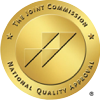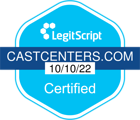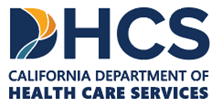What Is Dual Diagnosis?
- Home
- Blog
- Uncategorized
- What Is Dual Diagnosis?

By Deborah Brosseau
As the effects of mental illness and addiction started to push their way more significantly into social, medical, and political conversations in the mid-1980s, the question of where mental illness and addiction meet required an answer. If we had diagnoses and researched treatment processes for things like alcoholism and drug addiction and bipolar depression and OCD, what is it called and what do we do when someone struggles with a combo platter?
To answer the first question, it’s now called dual diagnosis. You might see the term co-occurring disorders used as well. When someone is dealing with an addiction disorder and a mental illness simultaneously, they have a dual diagnosis (or a co-occurring disorders). And this can be any combination of illnesses: weed and anxiety, booze and depression, opioids and PTSD, etc.
In 2018, the National Survey on Drug Use and Health estimated that 9.2 million adults in the U.S. experienced both mental illness and a substance use disorder. Having a mental health condition makes one twice as likely to have a substance use disorder. Easy to understand, as struggling with addiction, for example, could lead to episodes of depression and being depressed could lead one to drink. No matter which exists first, the enmeshment is strong.
That being said, identifying and interpreting symptoms are a little more complex. All the symptoms that go along with any kind of addiction and any kind of mental illness are in play. That’s a lot of symptom possibilities! Addiction screening tools are used to help clarify. Some of those symptoms include behavioral changes, social withdrawal, risky behavior, and loss of control over and increased tolerance of substances. Mental health screening looks for signs like mood changes, isolation, disordered thinking, and suicidal ideation. Other specific symptoms that might exist include financial irresponsibility, lack of hygiene, and poor performance at school or work.
Now back to what we do about dual diagnosis. A sequential treatment approach would be to work on the addiction, then the psychological problem. The separate treatment approach would tackle each problem simultaneously, but with different doctors not in communion with each other. These methods have low rates of success, and mental health organizations like the National Alliance on Mental Illness recommend an integrated treatment.
Integrated treatment for co-occurring disorders means both issues get addressed at the same time, with care providers and support systems all working in tandem.
Generally, detoxification is a primary step in dual diagnosis treatment. The patient has to cease the substance abuse safely with trained medical staff and monitoring during the withdrawal process. Rehab could be helpful for addiction and mental illness, as 24/7 care with therapy, medication (possibly), and other health services all in one place at one time sets the stage for long-term integrated support.
Therapy is another primary piece of the treatment puzzle. Cognitive behavioral therapy has been found to be an effective modality for people with dual diagnosis. Support groups are important in providing social connection and helpful tips and techniques for staying healthy and sober.
While dual diagnosis can be challenging and require a long commitment to treatment, integrated care programs have been proven to offer a great deal of hope for success.
References:
- NCBI, https://www.ncbi.nlm.nih.gov/pmc/articles/PMC2880934/
- Nami, https://www.nami.org/learn-more/mental-health-conditions/related-conditions/dual-diagnosis
- NCBI, https://www.ncbi.nlm.nih.gov/books/NBK64197/pdf/Bookshelf_NBK64197.pdf
- Addiction Center, https://www.addictioncenter.com/addiction/dual-diagnosis/
- Psychology Today, https://www.psychologytoday.com/us/blog/the-anatomy-addiction/201110/what-is-dual-diagnosis
GET STARTED TODAY!
(323) 457-8208
CAST Centers is Proud to Celebrate Over 18 Years
Helping Individuals & Families
Programs
What We Treat
-
Substance Abuse
Insurance
Alumni
Contact Cast Centers
CAST Centers
630 N Doheny Drive
West Hollywood, CA 90069
(323) 457-8208
Email
Administration
632 N Doheny Drive
West Hollywood, CA 90069
(323) 457-8208
Email
Service Area
CAST Centers is licensed by the California State Department of Health Care Services. DHCS Certification for Intensive Outpatient and Outpatient Services.
License Number: 190936BP.
Expiration Date: 8/31/2025.
Copyright © 2022 CAST Centers. All rights reserved.
Privacy Policy | HIPAA | Terms of Use | Site Map


